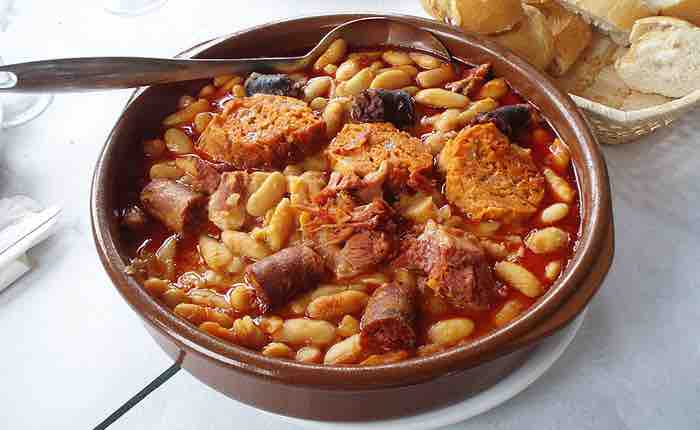Spain is home to a wide variety of unique beans and legumes, and certain regions are famous for particular types and dishes, for example the large white kidney beans from the Asturias region (Faba Asturiana), where these tender, creamy beans are key in the local bean stew Fabada Asturiana. The Basque town of Tolosa even holds a week-long festival in November in honour of the local renown black bean, alubias de Tolosa.
Rising international demand for Spain’s tasty beans has seen them become available online and in large supermarkets around the world. Spain reportedly has more than 20 bean varities, with some even having protected geographic status. Some renowned types include judion de La Granja (in Segovia, an hour from Madrid), Barco de Ávila beans (from Ávila and Salamanca, Castile-León), alubias de La Bañeza-León (La Bañeza beans, Castile-León), Lourenzá beans (from Lugo, Galicia) and Rubia de la Amuña (one of the best Spanish lentils, from La Amuña).
Around Spain you can find many regional bean stews known as fabada, which involve cooking the beans slowly with a mixture of meats – such as chorizo pancetta, black sausage and so on – depending on the region. The hearty Asturian stew, Fabada Asturiana, is one of the most widely available in restaurants across Spain and commonly eaten in winter.
A twist on this is Madrid’s cocido, which adds vegetables and cabbage to a tasty mix of sausages and chic peas (garbanzos). For chickpeas, some of the best include the Blanco Lechoso (from Andalusia and Extremadura), the Castellano, a fleshy yellowish chickpea grown in southern Spain and on the Castilian plains, and the smaller Pedrosillano. The buttery fine-skinned chickpeas from Fuentesaúco (Zamora, Castile-Leon) have received protected geographic status (PGI).
Spain’s beans also make flavoursome bean salads; just drizzle on olive oil, lemon, vinegar and salt to taste, alongside a hearty helping of diced garlic, tomato, onion and green and red peppers.
Rising international demand for Spain’s tasty beans has seen them become available online and in large supermarkets around the world. Spain reportedly has more than 20 bean varities, with some even having protected geographic status. Some renowned types include judion de La Granja (in Segovia, an hour from Madrid), Barco de Ávila beans (from Ávila and Salamanca, Castile-León), alubias de La Bañeza-León (La Bañeza beans, Castile-León), Lourenzá beans (from Lugo, Galicia) and Rubia de la Amuña (one of the best Spanish lentils, from La Amuña).
Around Spain you can find many regional bean stews known as fabada, which involve cooking the beans slowly with a mixture of meats – such as chorizo pancetta, black sausage and so on – depending on the region. The hearty Asturian stew, Fabada Asturiana, is one of the most widely available in restaurants across Spain and commonly eaten in winter.
A twist on this is Madrid’s cocido, which adds vegetables and cabbage to a tasty mix of sausages and chic peas (garbanzos). For chickpeas, some of the best include the Blanco Lechoso (from Andalusia and Extremadura), the Castellano, a fleshy yellowish chickpea grown in southern Spain and on the Castilian plains, and the smaller Pedrosillano. The buttery fine-skinned chickpeas from Fuentesaúco (Zamora, Castile-Leon) have received protected geographic status (PGI).
Spain’s beans also make flavoursome bean salads; just drizzle on olive oil, lemon, vinegar and salt to taste, alongside a hearty helping of diced garlic, tomato, onion and green and red peppers.
'Fabada' (Asturian bean stew)
METHOD:
- Put the beans to soak overnight in cold water.
- Place the shoulder of pork and the bacon in another container with warm water.
- Next day, wash the black pudding and the spicy sausage.
- Place the beans in a wide-based, flameproof earthenware dish with enough water to cover them by a couple of fingers. Boil uncovered on a high flame, removing any scum with a skimming spoon.
- Add the shoulder of pork and the bacon and simmer with the lid on for 2 hours, moving the dish around from time to time.
- Season and add the saffron, spicy sausage and the black pudding, leaving it all to cook together for approximately quarter of an hour.T
- Taste the beans to check they are tender and leave to stand for half an hour before serving.

